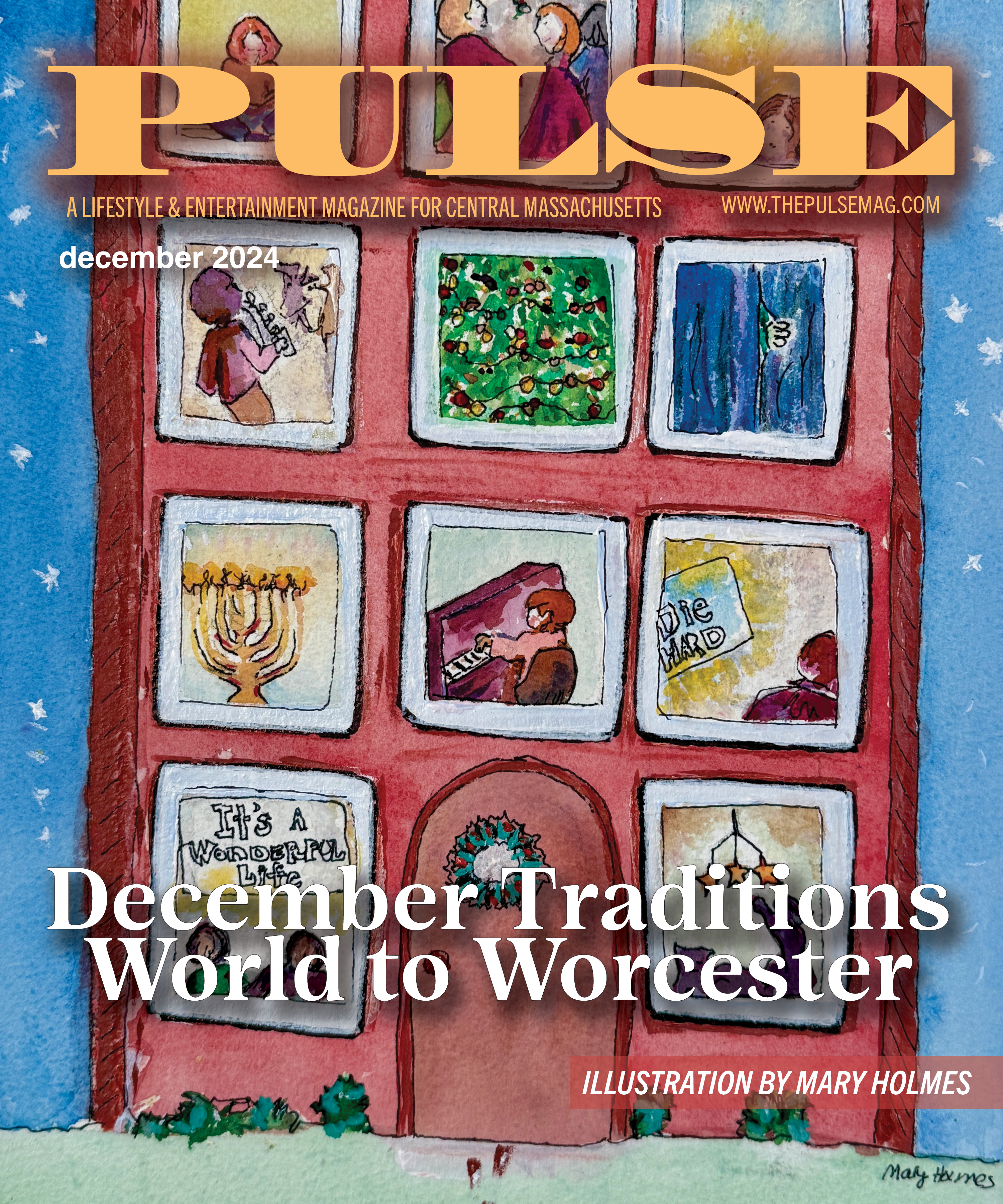Two shows, 400 years apart
Higgins Armory Museum and Holy Cross host must-see winter exhibits
December 2004 – This winter, don’t miss two wonderful art exhibits in Worcester at the College of the Holy Cross and the Higgins Armory Museum.
“Now Thrive the Armorers: Arms and Armor in Shakespeare”
Higgins Armory Museum, 100 Barber Avenue, Worcester, (508) 853-6015, www.higgins.org
This exhibit is way better than cribbing from Cliff Notes on eight of William Shakespeare’s most famous plays. At Higgins Armory, you can actually see the weapons and armor in use during the time of Othello’s military escapades, visualize the murderous intrigue as it unfolded in Julius Caesar and view implements used during the feudal warring that took place in Henry V.
The nearly 50 pieces are arranged in remarkable stage settings designed by Bill MacMillan. Accented by rich colors — black and red highlighted with touches of gold, the armaments glow with an inner energy infused with the Bard’s immortal words.
A brace of intricately tooled and inlayed wheel lock pistols attests to the growing use of firearms during the time in which Othello is set. The 16th century Earl of Pembroke’s authentic suit of armor engenders the power of hand-to-hand combat rife during the time of Henry V. From Shakespeare’s A Midsummer Night’s Dream, the theme of an imaginative world filled with fanciful monsters is reinforced in this exhibit by a fearsome three-pronged helmet and an artilleryman’s spear that breathes fire from a dragon’s mouth.
Inspired by the true story of the 1609 Jamestown settlers, Shakespeare wrote The Tempest. The play is really about the rising importance of technology in Elizabethan times. In this exhibit the juxtaposition of guns and war clubs implies the domination of the “savages” in Shakespeare’s brave new world.
And don’t miss the display of an empty suit of cap-a-pe (head to foot) armor similar to that worn by Hamlet’s ghostly father. The beauty of the suit deceives you, and you almost forget that “something is rotten in the state of Denmark.”
The exhibit runs through June 23, 2005.
“Garth Evans: Materials Being”
Cantor Art Gallery, College of the Holy Cross, 1 College Street, Worcester, (508) 793-3356, www.holycross.edu
Across town in the Cantor Gallery at Holy Cross, contemporary sculpture by Garth Evans is strewn across the gallery floor. Fourteen large, organic, abstract works appear to have crawled into the room in the dark of night and taken over the place.
Evans, a transplanted Brit, refers to these entities as “something like giant leeches, stuck to me, parasites from which I could gain no release.”The construction process seems simple enough, requiring only cardboard, razor blades, tape and a hot glue gun. Evans cut the cardboard into small triangles, taped and glued them to create a form and then covered the emerging sculptures in Fiberglass resin. But once an idea took hold, he couldn’t let go, working and reworking each shape until it was ‘right’ – some of the pieces taking nearly a year to complete.
Each form grew on its own. Evans used no sketches or maquettes (models). He just started organizing the recycled cardboard bits and went where the forms took him. It’s possible to view the forms as though they are body parts. If so, the work “Reach” might be perceived as a figure stretching outward and “Hold” as a body stopped at mid-crawl. In any case, these shapes create a creepy feeling that if you turned away, they just might start moving.
In 2002, Evans turned from these anthropomorphic cardboard/resin forms to work with clay. A series of 20 wall-mounted “clay drawings” and a half-dozen roughly sculpted heads are also included in this eerie exhibition.
The exhibit runs through February 5, 2005.







